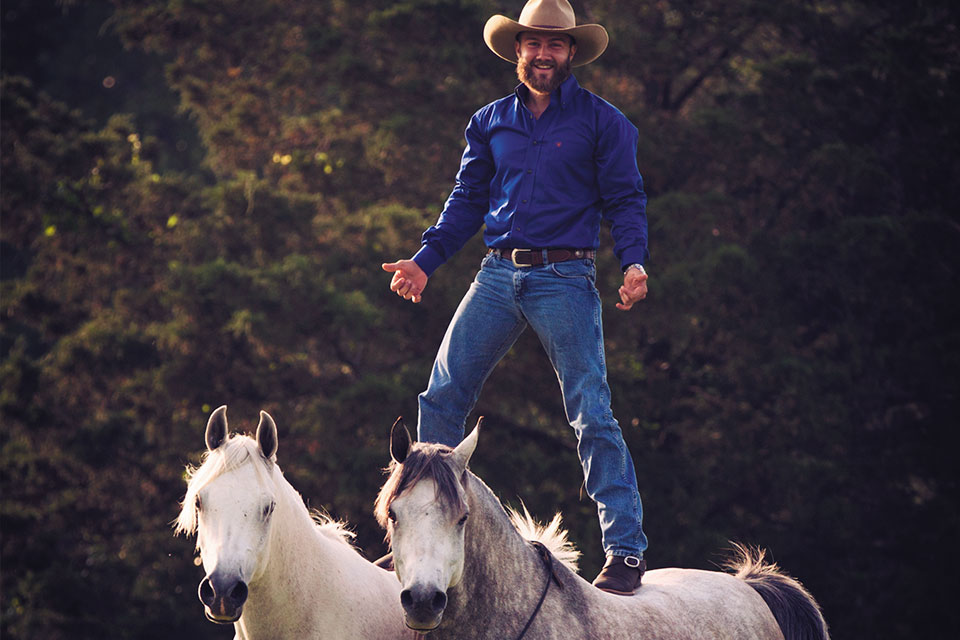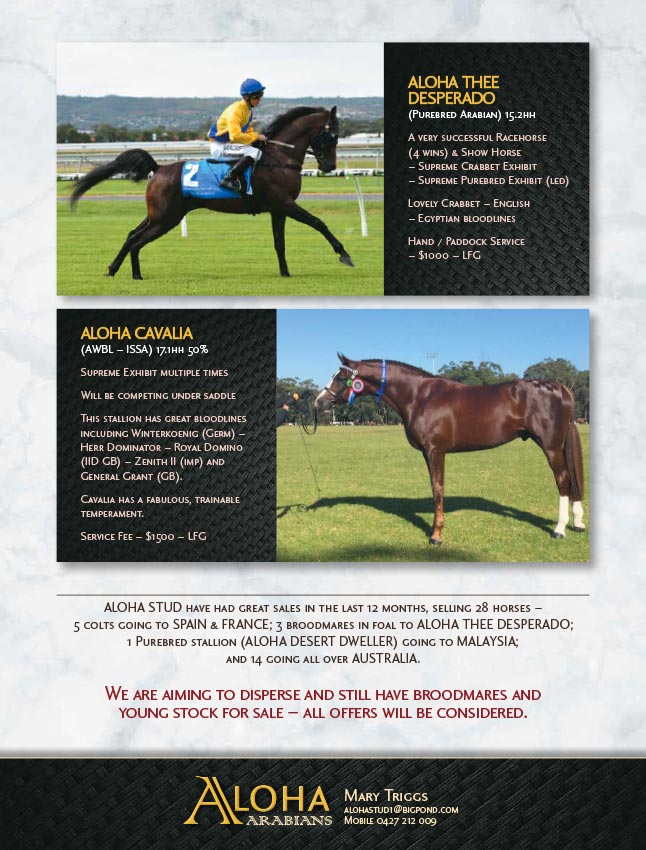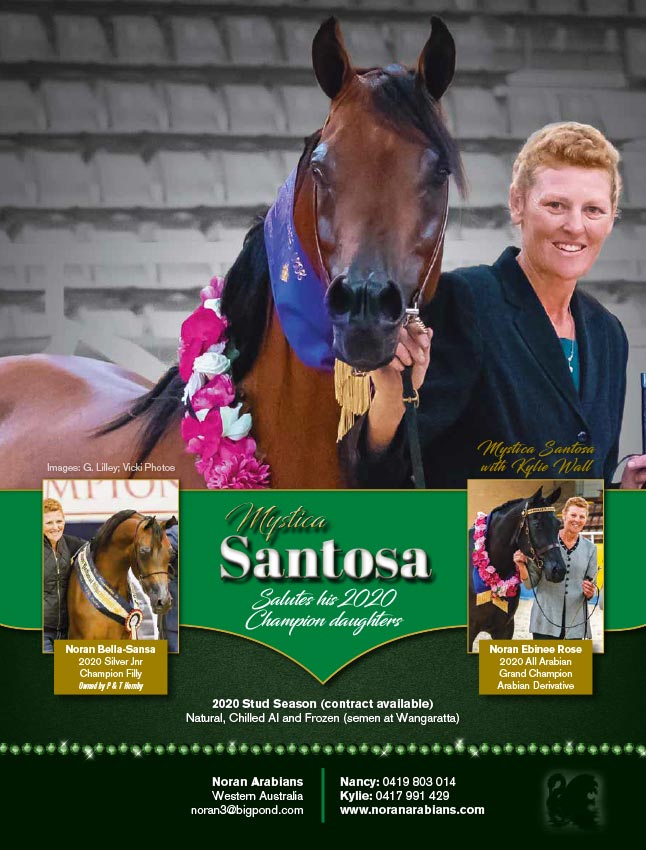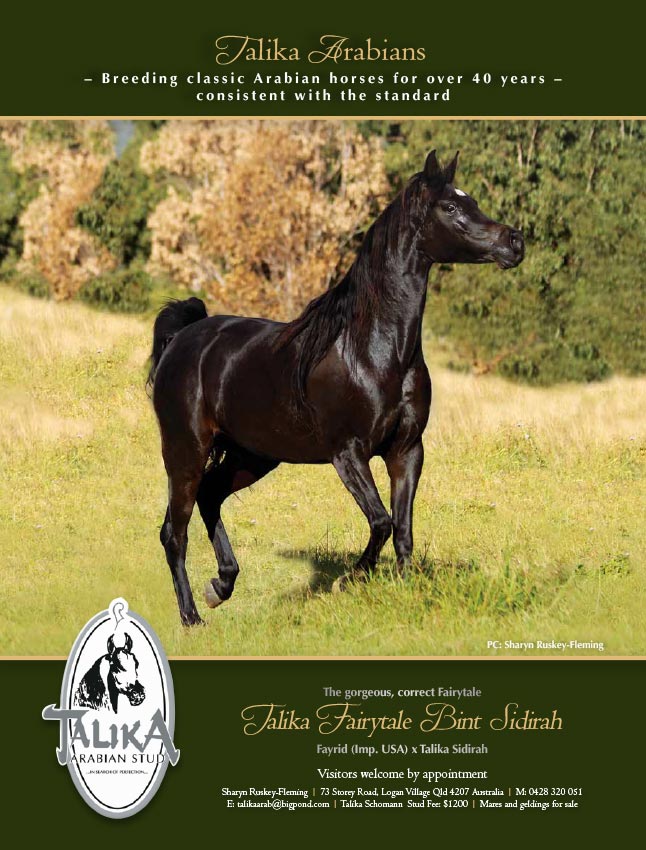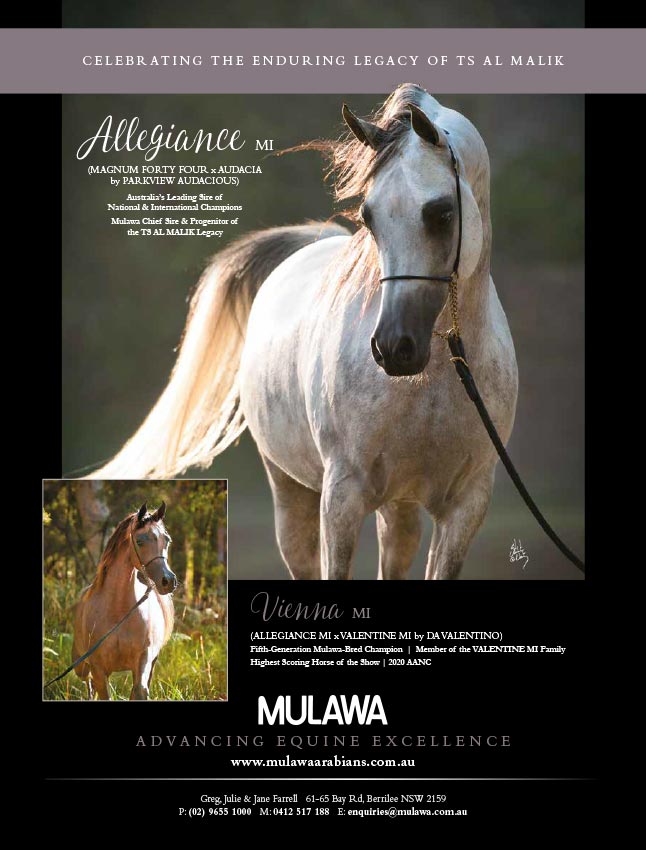
Key Questions To Ask When Buying A Saddle Horse
July 6, 2017
Youth in Focus
July 7, 2017Together, We Are WAHO

Australian contingent. Photo: Anne Brown
The Kingdom of Bahrain, an archipelago of 33 islands, is located in the Persian Gulf just off the eastern coast of Saudi Arabia. Arabian horse aficionados from around the world gathered at the Ritz Carlton Hotel in the capital, Manama, to attend the World Arabian Horse Organization (WAHO) Conference held under the patronage of HM King Hamad bin Isa Al Khalifa during February 6-15, 2017.
The Conference was formally opened on February 9 by HRH Prince Salman bin Hamad Al Khalifa, the Crown Prince. The ceremony started with a fascinating film highlighting the history of Bahrain’s Arabian horses. Mrs. Jenny Lees gave an excellent talk about the Royal Studs’ unique group of horses. I think we all agreed with her when she said, “Throughout the centuries the Arabian has been a formidable warhorse. From the number of countries represented in this room today, it seems the Arabian horse is now a creator of lasting friendships and a universal peacemaker.”
WAHO’s President, Peter Pond, on behalf of all WAHO members, then formally thanked HM King Hamad bin Isa Al Khalifa, Patron of the Conference, and HH Sheikh Isa bin Salman Al Khalifa, Host of the Conference, for so generously hosting WAHO’s 22nd General Assembly.
He also thanked HRH Prince Salman bin Hamad Al Khalifa for attending the opening ceremony, as well as HH Sheikh Faisal bin Rashid Al Khalifa and the High Committee members at the Royal and Crown Prince Courts for their warm welcome.
He emphasised one of the main reasons we all love attending these unique events – to enjoy not only the Conference days with the many excellent guest speakers and diverse social events, but also to have the chance to see and learn more about the horses and culture of the host country.
The main WAHO General Assembly business started with Peter Pond’s opening address, in which he spoke on several important subjects but I thought the following held great merit and is definitely food for thought for anyone involved with the breed. “We live in a very fast-moving Internet age of social media, instant communication and sometimes unrealistic expectations of instant answers and instant results. Most of us cannot imagine modern life without these useful tools.
“But any involvement with horses requires time and patience, whether that is in the handling or training or riding of them, or in planning your breeding programs for the years ahead. Sometimes we need to take a breath, sit back and return to older values, to appreciate the importance of real face-to-face communication, of taking the time to listen to each other, of allowing something to hold our attention for longer than it takes to read a tweet or to send off a quick text.
“In some ways it is perhaps an anachronism for us all to fly half way round the world just to get together for a few days, but I hope that by socialising together, meeting new people from every corner of the globe who all share one common passion – the Arabian horse – you will leave here feeling enriched and invigorated by new friendships and with a greater understanding of what WAHO is all about.”
At every WAHO Conference, those members who have passed away since the last meeting are remembered with a minute’s silence. This year the memorial section included an emotional tribute and special film in honour of WAHO’s distinguished Executive Committee Member for over 30 years, Mrs. Izabella Pawelec-Zawadzka from Poland, who sadly passed away in 2015. She is clearly greatly missed.
Other agenda items included the acceptance of China, to warm applause, as an Applying Registering Authority Member of WAHO. There are currently around 200 Arabian horses in China, many of them imported from Australia and USA. Their stated aim is to work closely with WAHO to have the first Chinese Arabian Studbook ready for acceptance at the 2019 WAHO Conference in Australia.
This was followed by the unanimous re-election of the WAHO Executive Committee, whose detailed resumes can be read on the WAHO website.
Further to the commitment made at the 2014 WAHO Conference to take a fresh look at how Consultants to the Executive Committee are elected, the WAHO Constitution had been amended and updated, requiring a formal vote to confirm its acceptance, which was unanimously passed. Peter Pond later stated, “We can now move forward with a stronger and better Constitution and also with what we hope will be seen as a more democratic way of finding new people to serve on the Executive Committee in the future. We look forward to the WAHO Conference in Australia in 2019, which will be the first time to enact the protocol for the nomination and election of new Consultants.”
Executive Committee Member Mr. Xavier Guibert reported on the proceedings of the WAHO World Registrars Meeting of which he is Chairman. Several issues of importance to the smooth running of the world’s Arabian studbooks had been discussed, and recommendations for updating some registration rules were made, to be brought forward to the next Conference in Australia.
As at every WAHO Conference, the delegates in turn presented their detailed annual reports with information about the Arabian horse affairs in their country. Some reported a marked increase in foal registrations, notably Saudi Arabia and Egypt, others remained at about the same level, and a few had seen a drop in numbers. It was good to note newer WAHO Members such as Croatia and Estonia were present, along with others who have not attended a Conference for some years, such as Algeria and Applying Member Cuba. Sitting and listening to all the delegates from all over the world, it brings home just how international and multi-cultural the WAHO family really is.
It was distressing to hear about the countries affected by war, such as Syria and Iraq, but encouraging to learn they are still continuing their Arabian horse activities – something Peter Pond had highlighted in his earlier speech. “Unfortunately we live in an age of instability, political unrest and turmoil, and it is unfortunately clear that several of our Member countries have been very badly affected. This of course has not only caused much human suffering, but has also had a detrimental effect on the Arabian horses in those countries. Yet it is very apparent to me, looking around the room, how very highly our Delegates from some of those affected countries value their Arabian horses, so much so that they have taken the time and trouble to be here with us today. For that strong commitment to WAHO and to their horses, I both thank them and applaud them.”
In his closing address, Peter Pond made a number of important points. Of particular note, he mentioned that the issue of equine welfare has become increasingly important to WAHO. Referring to the recent deaths of several horses competing in endurance he said, “It is increasingly clear that our Arabian horses are suffering and indeed dying in the name of sport… It is deeply shocking and it simply cannot be allowed to continue without our voices being raised in defence of these horses, who have no voice of their own and no choice but to go at the speeds dictated by their riders. Arabian horses have tremendous heart, tremendous courage, and tremendous bravery which is why they are the chosen breed for endurance. To stay silent and effectively abandon them to their fate would be to go against our core values and objectives. I can now assure you the Executive Committee will be writing a strong letter to the FEI very soon to put pressure on them to find a solution, and quickly, to this serious situation.”
He concluded by reiterating that WAHO is a totally non-political organisation, and that every registry, regardless of size, regardless of country, is equal. “As Jay Stream often repeated – it is not the horses that bring their problems to WAHO, it is the people. We have always tried, and will always try in future, to resolve all these issues the best way we can as and when they arise, in the best interests of WAHO, of our members, and of the purebred Arabian horse.”
Guest Speakers
We were treated to a wealth of Guest Speakers at this WAHO Conference. The first was Dr. Ali Hassan Follad PhD, Advisor to the Bahrain Tourism and Museums Authority whose subject was “A Brief History of Bahrain”. His talk covered the most important periods of the country’s extensive and rich history. Strategically situated between two continents, this maritime nation has been an important trading hub for over 4,000 years. Blessed with natural freshwater springs, and formerly dependent on pearling, fishing and agriculture, it was once known as “the mother of a million palm trees”. Since 1932 when oil was discovered, the country’s economy has evolved rapidly, and today Bahrain is also a busy financial and business centre.
Prior to the Conference, many of us had the opportunity to visit historic sites in Bahrain that brought to life the subjects Dr. Follad spoke about. At the height of its power, the intriguing Dilmun civilisation (2300 BC – 500 BC) controlled the Gulf trading routes. Ancient Sumerian legends told of the islands as a garden paradise, promising eternal life, so people even brought their dead from far away to be interred here, creating the thousands of ancient Dilmun burial mounds that dominate the landscape in parts of northern Bahrain. We saw many of them as we drove around and we also saw remarkable artefacts from this and other eras at the Bahrain National Museum. A visit to the ancient harbour and Qal’at al Bahrain (Bahrain Fort), the former capital of Dilmun, was extremely interesting as the fort is an exceptional example of unbroken continuity of occupation over a period of almost 4,500 years.
Dr. Follad also recounted the history of the Al Khalifa dynasty, rulers of the country since 1783. Many of us had visited Sheikh Isa House, the home and centre of government of Bahrain’s longest reigning sovereign, Sheikh Isa Ibn Ali Al Khalifa (1869–1932), which offered a great insight into royal life in the 19th century. Sheikh Isa was born in the Riffa Fort, an historic landmark we also enjoyed exploring, together with the nearby Military Museum with its huge, dramatic paintings depicting earlier battles the Al Khalifa Family fought while conquering Bahrain – mounted on their magnificent Arabian warhorses. All this was significant background information for us because the Al Khalifa Family have preserved and bred their Arabians for over 200 years, and we were looking forward to seeing these descendants of their warhorses at the Royal Studs.
The next guest speaker, renowned breed historian Edouard Al-Dahdah, gave two talks which due to some unexpected time constraints had to be combined: “Arabian Strains: Origins, Meanings And Relevance Today” and “The Golden Thread – Connecting Our Arabian Horse Heritage From The Past To The 21st Century”. He gave us much food for thought, explaining many aspects of strains and preservation breeding, with little-known documented facts about the origin of some strains, for example the Tuwaisah strain which is still present in Bahrain was mentioned by a French traveller in 1685. In Edouard’s opinion, no strain is “better” than another: “They are all equally good, it is actually a matter of preference, of taste and of personal choice among individuals or among tribes… but that preference may not be shared by other tribes or in other areas, and they would have other preferred strains.” On the relationship between strains and type, Edouard said, “There is no single classic Arabian type, there are 200, 300 Arabian types not just one. In the west we have converged too fast towards one type of Arabian horse and so they all end up looking like each other, which is pretty much the show standard and everything that doesn’t look like that is ‘off type’, but I would like to say that among Bedouins there is this notion that there are different types of horses and they are all equally valuable. Some are tall, some are long, some are powerful, some are feminine, some are masculine, so there is not just one classic Arabian type.”
His final message was, “Find the strains of your horses. Find the ancestral mare, try to find as much as possible about her, what she was and how many generations are between her and your current horses today, try to read about what their history is, try to associate yourself with that history and take pride in what you own. These horses have been transmitted to us generation after generation by people who have fought for them, battled for them, risked their lives for them. So there is something about the relationship between Arabian horses and humans that goes beyond just owning a horse, goes beyond the price or the value of a horse, even the sentimental value. It’s about a relationship between an animal and a man that goes over generations – and this is what preservation is about.”
Deirdre Hyde, a highly respected international judge, published author and acknowledged pedigree expert based in the UAE gave us an enthralling “Short Gallop through the Story of Arabian Racing”. Her lavishly illustrated talk covered racing in many countries from the distant past right through to modern times. Deirdre began with, “The racing of Arab horses of recognisable type and beauty has been an integral part of the breed which reaches back over hundreds of years, to a time long before any Arab Breed Societies were thought of and very few exclusively Arab horse studbooks were kept, and even those were generally only kept by rulers or leaders. Pedigree was a matter of tribal pride. …The importance of the horse and racing as a vital part of Arab culture cannot be underestimated… Testing the athletic ability is such an important part of Arab horse tradition, it is to be hoped it will never be lost.”
Deirdre concluded her talk with, “Mankind, by selective breeding, can completely change the appearance of an animal in a very few generations, as has happened with the look of the modern show horse or the speed of the modern racehorse. If we care about preserving not only the genetic breadth of the breed but also the whole unique identity of the classic Arab horse as has been described by many experts over the past centuries, the racing of all our horses should be encouraged not just for speed or winning but for the joy of seeing beauty that can perform.”
Dr. Samantha Brooks PhD, a leading specialist in Equine Genetics from the University of Florida Genetics Institute was the next speaker. Her first talk, “How Science is Helping us to Help our Horses” covered the latest findings on laminitis susceptibility and Equine Metabolic Syndrome in Arabian horses. Something that caught my attention was when Dr. Brooks said that laminitis has been known for some 2,000 years and the ancient remedy of cooling the feet by standing the horse in running water has in fact been found, by recent controlled research studies, to be very effective as a first aid measure to prevent further damage to the hoof. She explained that applying ice to the feet and lower legs for periods varying from 4–6 hours and 24–48 hours has shown remarkable effectiveness, in fact some equine hospitals in America are beginning to use this therapy for horses at risk of laminitis due to colic or colitis. The section of the talk on equine metabolic syndrome also highlighted the latest research. It is thought the Arabian may be more susceptible to this condition because, as Dr. Brooks explained “…for a desert horse the ability to quickly lay on fat and to save those nutritional resources for lean times was an enormous advantage for survival.” A little-studied gene has been identified, with some very promising results which hopefully will save many horses in future from these extremely distressing conditions.
Her second talk was titled “Genomics – the Door to the Future: Analysing the Population Structure and Ancestry of the Arabian Horse.” Dr. Brooks’ easy way of delivery with excellent graphics made this complex topic easy to understand. She explained how interpreting a horse’s pedigree on paper compared to knowing what genes that horse has actually inherited can be very different in reality, and how this knowledge and the latest genetic tools can help breeders. Dr. Brooks also emphasised the dangers of too much inbreeding, saying “…in general all animals are healthier if their inbreeding numbers are lower, they have stronger immune systems, they tend to grow better and they tend to have better conformation when their inbreeding is kept a bit lower… I encourage you to think a bit more in the long term in that by maintaining genetic diversity today you are putting an investment in the bank so that future generations have more alleles on which to draw and are likely to be sustainable going into the future.”
The next speakers were the distinguished Polish experts Anna Stojanowska and Jerzy Białobok, for so long associated with the famous State Studs of Poland. First, Anna told us a bit about the long history of Polish Arabian horse breeding, then Jerzy expanded on the great influence one stallion from Bahrain has exerted around the world. Bred by HH Sheikh Hamad bin Eissa Al Khalifa, Kuhailan Afas was purchased in 1931 by Bogdan Zietarski as a yearling for the Gumniska Stud of Prince Roman Sanguszko. Regrettably he was lost in 1939 and only one of his sons, Bad Afas, survived World War II. He in turn left two excellent sons – Arcus and Abu Afas. It was mainly through Abu Afas’ son Comet, and Comet’s grandson Probat, that the Kuhailan Afas sireline achieved worldwide renown and is still cherished by breeders today. Among other notable descendants of Kuhailan Afas one must not forget those on the distaff side of the pedigrees, such as Naganka by Bad Afas – exported to USA where she was to produce the famous stallion, Bay El Bey (sire of Bey Shah) and the important broodmare Sabellina by Abu Afas, found in so many racing pedigrees to this day. This strain returned to Poland in 2014 thanks to the generous gift from the Royal Studs of Bahraini of the stallion Kuhailaan Aafas Maidaan, who hails from exactly the same female line and strain as the “original” Kuheilan Afas. Who knows, maybe one of his descendants will prove to be the “Comet of the 21st Century”.
Emma Maxwell, the eminent British writer, international judge and photographer took as her theme “Precious Pearls: The Importance of Bahraini Foundation Horses in Breeding Programmes Worldwide”. Her well-researched talk, richly illustrated, gave us a unique insight into the extraordinary worldwide influence of three mares who left Bahrain prior to 1940, as well as underlining how the breed has evolved in different countries over the generations. The first mare Emma discussed was Jellabiet Feysul, of the Kehaileh Jellabieh strain, bred by the Emir of Bahrain and acquired circa 1846 by Abbas Pasha I, Viceroy of Egypt. Her female line was continued by Ali Pasha Sherif, and later by Lady Anne Blunt before spreading worldwide. As Emma explained, “… the family has been selected by a century’s worth of some of the world’s most significant breeders.” Modern descendants include such famous horses as World Champions Abha Qatar and Fadi Al Shaqab.
The second mare referenced was the bay Bint El Bahreyn, born in 1898 of the Dahmah strain, presented by Sheikh Isa bin Ali Al Khalifa to the Khedive Abbas Pasha II in 1903, and acquired by Lady Anne Blunt in 1907 along with no less than seven members of her family. Among her direct descendants are such notable horses as the influential broodmare Bint Maisa El Saghira and the outstanding racehorse ZT Ali Baba, and her line is treasured in particular at the famous Albadeia Stud in Egypt. In fact she appears somewhere – often multiple times – in just about every straight Egyptian pedigree.
The third mare Emma talked about was the little bay Nuhra, of the rare strain Kehailet Al Wadhnieh Khursanieh, gifted by her breeder Sheikh Hamad bin Eissa Al Khalifa (who also bred Kuhailan Afas) to the Earl of Athlone who imported her to the UK as a two-year-old in 1938. Among her widespread and famous descendants are foundation broodmares such as Kazra, World Champions such as Maleik El Kheil and countless successful performance horses. Emma also briefly mentioned Thorayyah, a bay mare of the Tuwaisah strain who was exported to America in 1950, whose most notable descendant was the great racehorse Meteor, and Sawannah, a chestnut mare of the Dahmah strain who was exported to the USA in 1954, whose rare line has recently returned to Bahrain via Germany.
Pauline Du Plessis from South Africa was the last of WAHO’s guest speakers, talking about “The History of the Tuwaisan Sire Line in South Africa”. She told the story of how Dr. Valerie Noli-Marais, a medical doctor who ran a small Arabian Stud near Capetown, had become interested in the origin of the Arabian horse. On a visit to Bahrain in 1968, searching for the qualities of vitality, presence, and great toughness which she thought were being lost in the western-bred Arabians, she found them in the 13-year-old dark bay stallion Tuwaisan, bred by the Royal Amiri Stud, who had won over 50 races in ten seasons of racing. On her return home, to her surprise and joy a telegram arrived, stating she would receive Tuwaisan as a gift from his breeder, HH Emir Sheikh Eissa bin Salman Al Khalifa. Tuwaisan is another example of the Bahraini Arabians’ impact worldwide as he too, spread their influence by leaving an important legacy in South Africa, most specifically with top class endurance horses. At the closing of the Conference, Mrs. Deb Watson, a Director on the Board for our Society, stepped up to the lectern to advise the gathering that Australia will proudly host the next WAHO Conference in 2019, and invited everyone to attend. An inspirational short film about our country and Arabian horses followed and was extremely well received.
Social Events and Pearls of Bahrain Days
Included in the exciting four Pearls of Bahrain Days were visits to the Royal Arabian Studs, which are covered elsewhere within the magazine under the title “Living History – Bahrain’s Desert Bred Horses”.
We all thoroughly enjoyed the many splendid events held at spectacular venues, especially the dinners where Arabian horses owned by some of Bahrain’s many private breeders were paraded for us while we dined. Sincere thanks go to our gracious hosts The Royal Court; Crown Prince Court; Royal Arabian Studs of Bahrain; Bahrain Royal Equestrian and Endurance Federation; Rashid Equestrian & Horseracing Club; H.E. Sheikha Mai bin Mohammed Al Khalifa, President of the Bahrain Authority for Culture & Antiquities; and Al Rashediah Stud. Special thanks also go to Dr. Khalid Hassan, Jehangir Rustomjee and the teams from the Royal Stables, Etiquette and Howar Seasons who all worked so hard to ensure such a successful event.
We spent an exciting afternoon watching racing at the Rashid Equestrian & Horseracing Club, a picturesque racecourse with both sand and grass 2,400 metre tracks and the longest straight I have ever seen. The featured race was the 1,400 metres WAHO Cup with seven runners. The attractive mare Tuwaisah Muneera (2011, Obeyaan Barakat x Tuwaisah Newaadir) just caught the front running stallion Jellaby Sareeh (2006, Hamdaany Wadhah x Jellabieh Agdaam) in a photo finish, with the mare Hamdanieh Huboob (2011, Kuheilan Umm Zorayr Mabrouk Al Bahrain x Hamdanieh Raawa’h) a close third. The special race for the Jay W. Stream Traditional Arabian Horse Cup was a fun finale to a great afternoon, with both riders and horses in traditional attire. A jubilant Ahmed Riyadh riding Zaizoom Al Uraiq romped across the finish first, standing in his stirrups and waving to the crowd!
Afterwards we visited the impressive modern National Monument Museum, the vision of a King and the story of a nation. The 57 individual interactive displays and 65 video monitors made it a fun and educational experience for us.
A sensational moonlit evening then unfolded for us at Riffa Fort, originally built in 1812, where we were greeted by the Police Band playing rousing bagpipe music. We were spellbound as we had our second glimpse of the day of Bahraini Arabians, which are also used by the mounted police and for ceremonial purposes, as a group of riders emerged from the illuminated fort’s gates. We were then entertained by a charming rendition of an ancient ceremony, once used by the Bedouins before setting off on ghazus (raids), as the young boy, Sheikh Khalid Bin Ahmed Bin Saqr Al Khalifa, stood proudly reciting the names of all the strains of the horses in a gloriously rhythmic poem. What an astonishing and delightful evening!
Another truly memorable evening was Al Rashediah Stud’s horse presentation and dinner, most generously hosted by the owner Mr. Rashid A. Rahman Al Jasmi. We were welcomed with traditional coffee and sweets, falcons to stroke or hold and salukis to pat, while entertained by traditional musicians. We were all mesmerised by the exquisite blue-lit avenue of horse-head fountains, created by the American sculptor Karen Kasper, lining a pathway to the impressive show barn. We were treated to a floodlit display of ethereally beautiful mares, many accompanied by their foals, as well as several homebred youngsters highlighting Mr. Al Jasmi’s already successful breeding program. As commentator Klaus Beste explained, this stud, founded in 2009, breeds straight Egyptians based mainly on Katharinenhof, Ansata and Imperial bloodlines. The last horses presented were the internationally renowned stallions Jamil Al Rayyan (2005, Ansata Hejazi x Dana Al Rayyan), and ZT Faa’iq (1997, Anaza El Farid x ZT Jamdusah) looking wonderful for his age. We were then invited into a spectacular tent decorated with thousands of twinkling lights, where we enjoyed a delectable meal while watching an enthralling new film about Bahrain and its horses.
Our last equestrian event was The Late HH Shaikh Faisal bin Hamad Al Khalifa – First International Arabian Horse Show organised by the Bahrain Royal Equestrian and Endurance Federation. Showing is already very popular with the private breeders in the country, their ECAHO-affiliated National Show has been held annually for many years. This first international show was equally well supported, with 135 entries forward for judging, the whole event broadcast live on Bahraini television and live-streamed on the internet. Unfortunately, the weather was not kind, being unseasonably cold and rainy, but despite the conditions we admired the excellent horses, which came from a most interesting cross section of international bloodlines. The Junior Colt Champion, owned and bred by Mr. Abdulrahman Al Jasmi from Al Rashediah Stud, was the impressive three-year-old grey Hermes (EKS Alihandro x Sanadina). Mr. Saeed Jaffar Almaheshi’s Champion Mare, H Perdita (2012, Kunar T x Exotic Pearl) was imported from the UK, and all the other Champions came from the UAE. Yearling Filly Champion D Mastura Al Aqeed (Wadee Al Shaqab x DF Yasirah), owner Hamad Al Hajri; Yearling Colt Champion Saadoun Al Zobair (SMA Magic One x Najdiya Al Zobair), owner Mr. Fadhel Abbas Al Jamri; Junior Filly Champion Alia Al-Ameer (2015, AJ Portofino x Ava), owner Mr. Alaa Abduljabbar Hammad, and Senior Stallion Champion D Jad (2013, Frasera Mashar x Muranas Je Taime), owner Mr. Khalil Ebrahim Mukhtar.
What a great pleasure it was to attend the WAHO Conference and experience the exciting activities associated with it. I found visiting Bahrain to be a magical experience full of surprises, captivating history, friendly people and amazing Arabian horses! I can hardly wait until Australia hosts the next WAHO Conference in 2019. Anyone with an interest in the Arabian horse is welcome to attend and I hope to see many of you there!
For further information about the World Arabian Horse Organization please visit their website at www.waho.org






